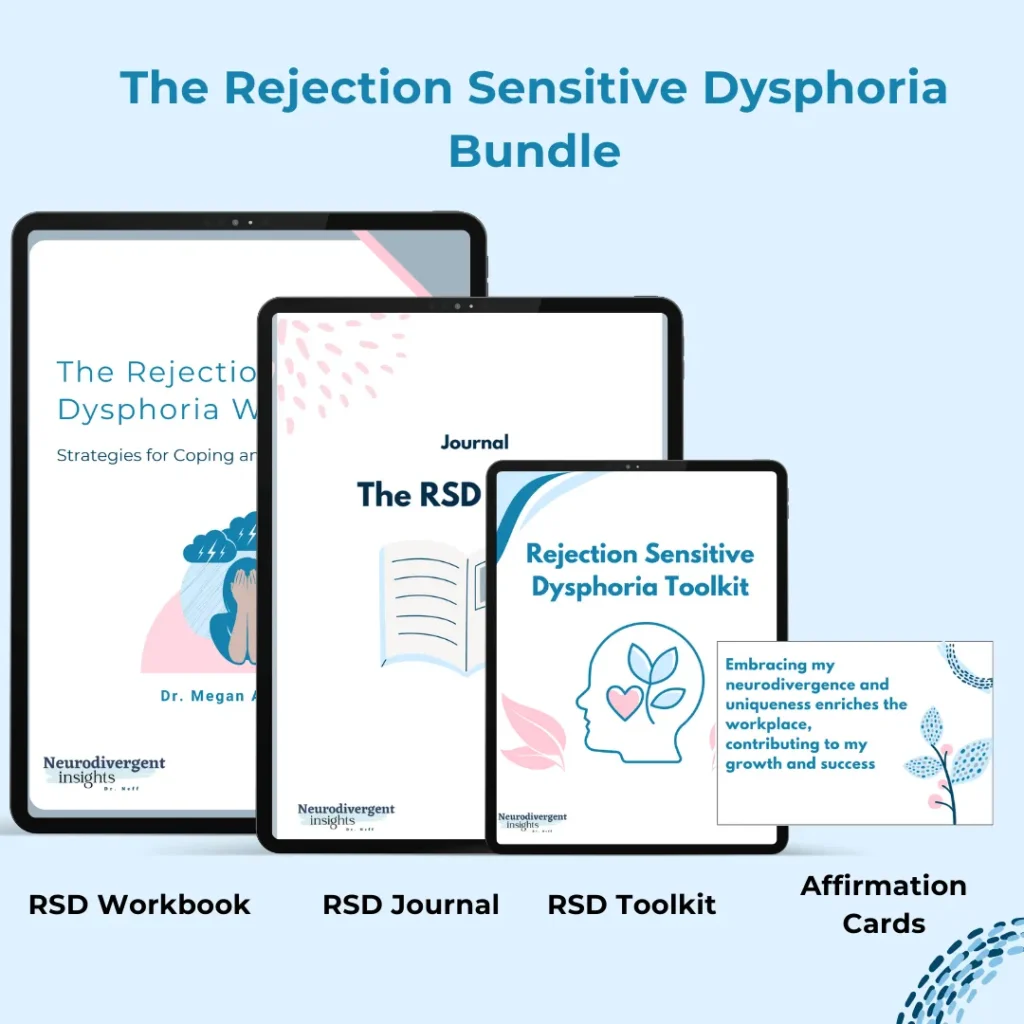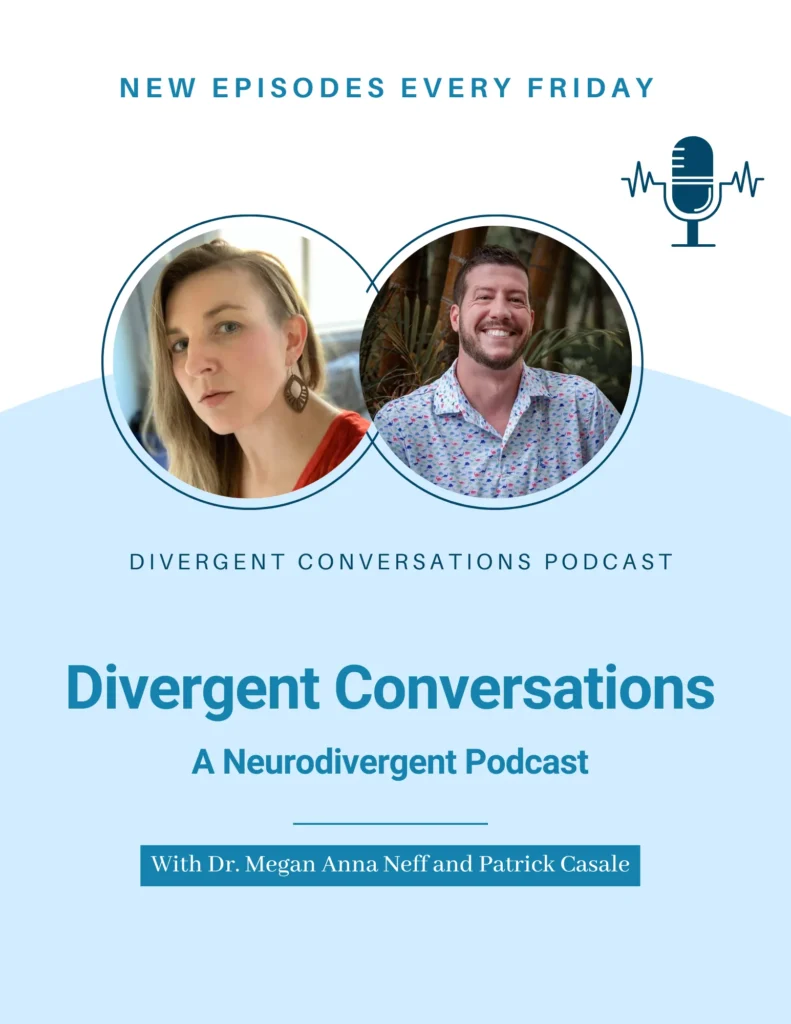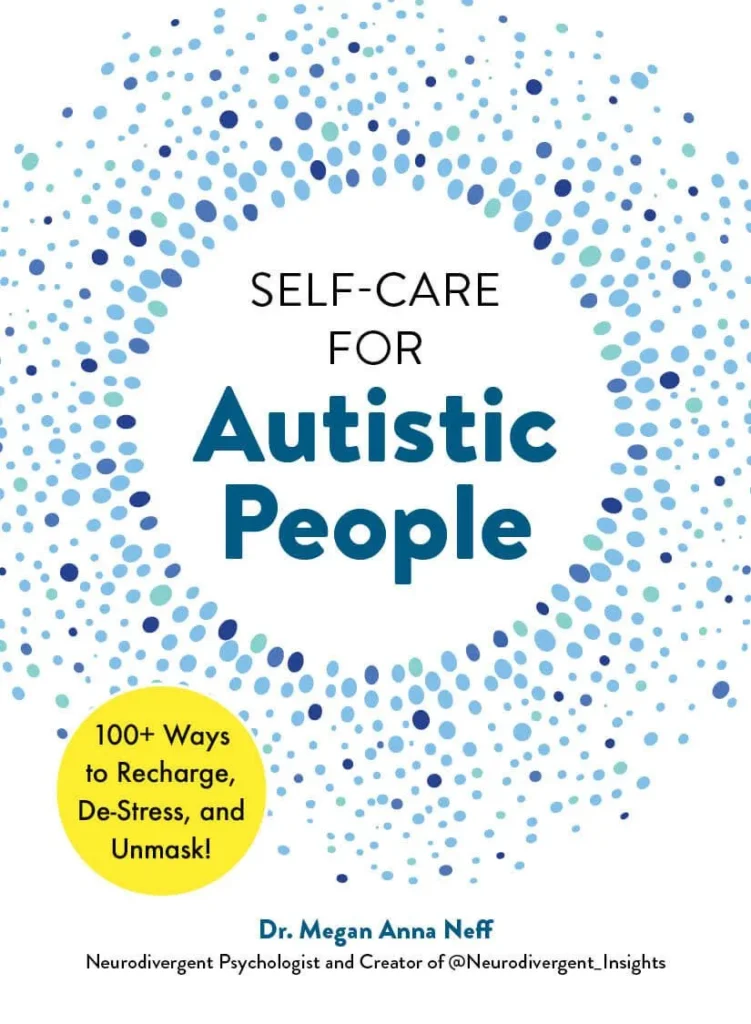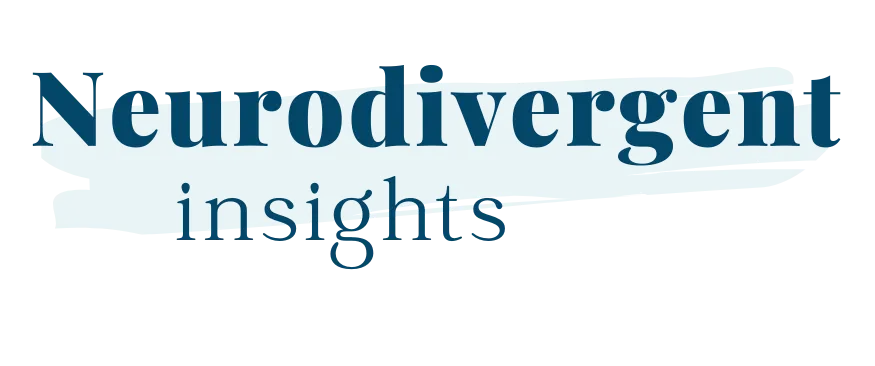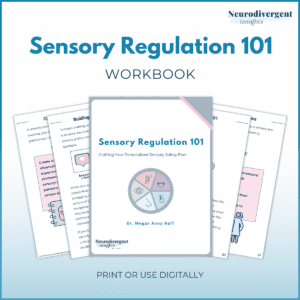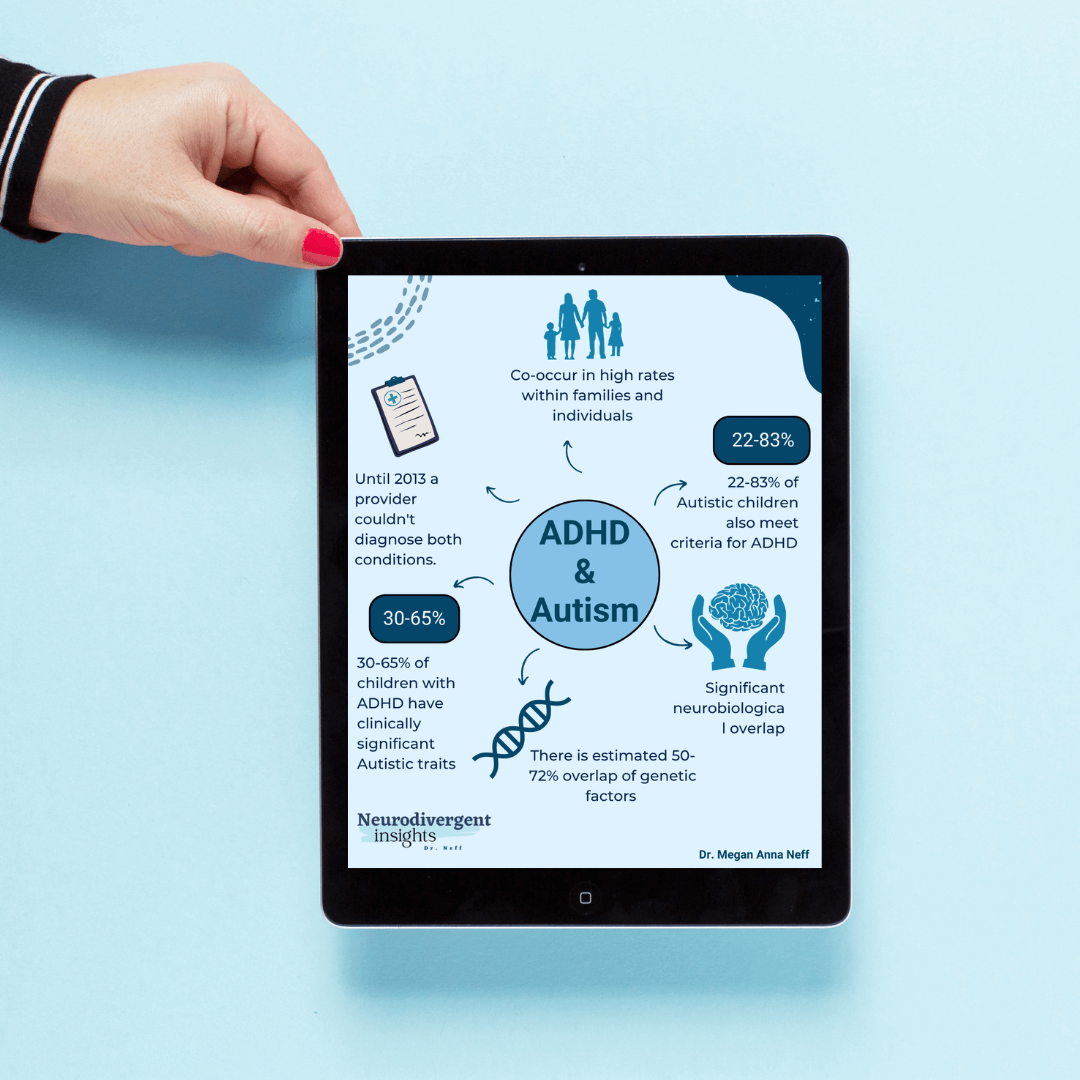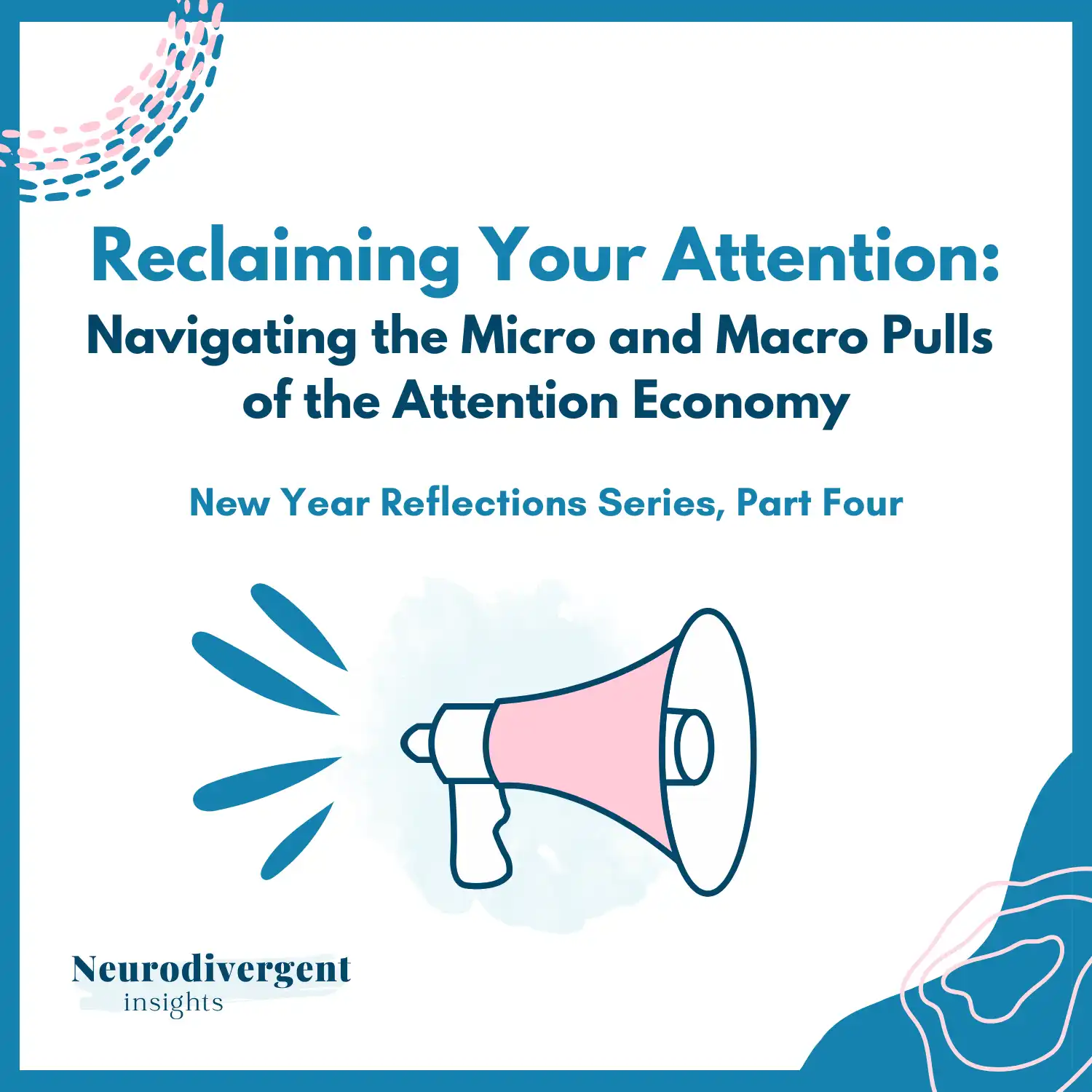ADHD and Autism: How ADHD and Autism are Related

Autism and ADHD Overlap
When we hear about autism and ADHD, we may think of two distinct disorders, but the reality is much more complex. Both conditions frequently co-occur, and in many cases, a person who is autistic may also have ADHD, and vice versa. This overlap is not just anecdotal; research has shown that the two conditions share a great deal of genetic and neurobiological overlap.
As an Autistic-ADHDer with lived experience of both, I know firsthand the challenges that come with navigating the overlap between Autism and ADHD. These two conditions often co-occur at high rates, with many individuals having both diagnoses. But what does this overlap actually mean? Current research suggests that Autism and ADHD share a great deal of genetic and neurobiological overlap, which may explain why these conditions commonly occur together in families and individuals.
However, much more research is needed to fully understand the relationship between Autism and ADHD. As an Autistic-ADHDer (AuDHD) I have personal experience with the overlap of autism and ADHD! So let’s unpack this infographic and talk about the prevalence of overlapping ADHD and autism, what AuDHD means, and how to support AuDHDers in practice.
Prevalence of Overlap Between ADHD and Autism
First of all, it’s helpful to understand that the overlap between autism and ADHD is a relatively new area of research. Until recently, a diagnosis of one condition precluded a diagnosis of the other. However, the update to the DSM-5 in 2013 allowed for a dual diagnosis, opening up a new area of research (Taurines et al., 2012). In fact, recent studies have shown significant similarities in the phenotypic, genetic, and neurobiological features of both conditions (Sokolova et al., 2017).
Research findings on the overlap of co-occurrence between autism and ADHD are limited, and it’s worth noting that the percentages of co-occurrence vary greatly across studies, likely due to factors such as misdiagnoses or missed diagnoses. As such, there is a large variance in reported percentages. Nonetheless, here is a summary of some of the research findings on the overlap between ADHD and Autism:
✦ Several studies show a prevalence rate of 22-83% of Autistic children also meet the diagnostic criteria for ADHD (Ronald et al., 2008; Matson et al. 2013; Sokolova et al., 2017).
✦ Similarly, 30-65% of children with ADHD have clinically significant levels of Autistic traits (Clark et al. 1999; Ronald et al. 2008; Sokolova et al., 2017).
✦ Twin studies and family studies consistently show substantial genetic overlap between the two conditions. There is approximately a 50-72 % overlap of contributing genetic factors (Sokolova et al., 2017).
✦ According to the CDC 14% of ADHD children are also Autistic.
In some cases, an individual may not meet the full diagnostic criteria for both ADHD and Autism but may have subclinical levels of traits associated with each condition. For instance, an individual with ADHD may have a greater number of Autistic traits than the general population but not enough to receive a clinical diagnosis, and vice versa.
Reasons for Co-Occurrence
There are several hypotheses surrounding the reasons for the high co-occurrence of ADHD and Autism. One of the leading theories is a shared genetic etiology. Twin and family studies have consistently demonstrated a significant genetic overlap (approximately a 50-72% overlap) between the two conditions, suggesting that genetics may play a role in why they commonly co-occur within individuals and families (Leitner et al., 2014; Rommelse et al., 2010).
Another theory proposes that the co-occurrence may be due to shared neurobiological mechanisms, particularly those involving executive functioning, attention, and reward systems (Christakou et al., 2013). Overall, more research is needed to fully understand the complex reasons for the overlap between ADHD and Autism.
What is AuDHD stand for?
AuDHD, is an emerging unofficial term that has been widely adopted by the neurodivergent community. The term combines autism and attention deficit hyperactivity disorder (ADHD) to highlight the intersection of these two neurodivergent identities. It describes people who identify as Autistic and ADHD, emphasizing the co-occurrence and overlap. While not widely recognized in the medical community, AuDHD has been informally adopted by the neurodivergent community as a way of celebrating and identifying the unique experiences that multiply neurodivergent (Autistic-ADHDers) experience.
Suspecting You Have Both Autism and ADHD: What Comes Next?
If you suspect that you may be an AuDHDer (Autistic or have ADHD in addition to your current diagnosis), you may wonder: what do I do next? If you suspect you may be an AuDHDer you’re not alone. These conditions are common, but unfortunately, they’re also often misunderstood and misdiagnosed. It can be challenging to navigate the process of seeking a diagnosis, finding the right support, and connecting with a provider who understands neurodivergence in adults, women, trans, and BIPOC.
Fortunately, there are many resources available to help you learn more about your neurodivergent identity. Whether you’re just starting to explore the possibility of being Autistic or having ADHD, or you’ve already received a diagnosis, there are steps you can take to understand better and support yourself. Here are some potential steps you can take if you’re in the process of self-discovery:

✦ Seek a formal evaluation. It’s important to find a clinician who has experience in diagnosing and treating neurodivergent individuals. By seeking out an evaluation, you can better understand your neurodivergent profile and access appropriate support. However, it is essential to find a healthcare provider with experience and understanding of non-stereotypical presentations of ADHD and Autism, especially for individuals who identify as women, BIPOC, genderqueer, or non-binary. This is important because the traditional diagnostic criteria for both conditions were based on studies that primarily included cisgender white males.
✦ Work with a neurodivergent affirming therapist. Finding a provider who is familiar with both ADHD and Autism, as well as someone who is committed to providing affirming, neurodivergent-friendly care, can help you in your season of discovery. To find a neurodivergent affirming therapist, you can find several directories available on my resource page.
✦ Additionally, resources are available to help you explore your potential neurotype. Several screening tools exist to help identify ADHD and Autistic traits. Check out my blog posts that review screeners for ADHD and Autism for links and to learn more about these resources. My personal opinion is that self-identification is valid, and a person’s experience is more important than fitting into a specific diagnostic box.
✦ Connecting with the neurodivergent community can provide valuable support and resources. The online Autistic-ADHD community is a thriving space where you can learn through lived experience and connect with others who share your experiences. Joining a Facebook group, following lived experience accounts on Instagram or Tiktok, and watching educational YouTube channels can be powerful ways to learn more about the conditions and gain support. Be aware that not all information on social media is accurate, and misinformation can spread quickly. It’s important to find trustworthy sources and seek out the guidance of healthcare professionals who are familiar with both Autism and ADHD.
Strategies for Supporting AuDHDrs
When it comes to providing support for AuDHDers, taking an individualized and holistic approach is essential. Additionally, incorporating and respecting neurodivergent identities and approaching care holistically, rather than trying to change them to fit neurotypical standards, is critical. Supports may include things like:
✦ Providing accommodations to support sensory needs, such as access to quiet spaces, the use of noise-canceling headphones, and adjusted lighting.
✦ Neurodivergent affirming care is crucial—meaning you value and respect the person’s neurodivergent identity throughout treatment. And encouraging them to incorporate their neurodivergent identities in an affirmative way.
✦ Supporting nervous system regulation can also be beneficial, such as offering anxiety management techniques or reducing overstimulation.
✦ Executive functioning supports, such as creating structure and routines and strategies for time management, organization, and planning, may be useful.
✦ Leaning into their strengths, interests, and preferences. These strengths can include a high level of creativity, high visual-spatial abilities, an intense focus on special interests, and an ability to think outside the box. This is important because our challenges can often overshadow the unique strengths of Autistic-ADHDers.
Research Citations:
Leitner Y. (2014). The co-occurrence of autism and attention deficit hyperactivity disorder in children – what do we know?. Frontiers in human neuroscience, 8, 268. https://doi.org/10.3389/fnhum.2014.00268
Matson, JL, Rieske, RD, Williams, LW: The relationship between autism spectrum disorders and attention-deficit/hyperactivity disorder: An overview. vol. 34, pp. 2475-2484. Research in Developmental Disabilities (2013). doi: 10.1016/j.ridd.2013.05.021
Rommelse, N. N., Franke, B., Geurts, H. M., Hartman, C. A., & Buitelaar, J. K. (2010). Shared heritability of attention-deficit/hyperactivity disorder and autism spectrum disorder. European child & adolescent psychiatry, 19(3), 281–295. https://doi.org/10.1007/s00787-010-0092-x
Ronald, A, Simonoff, E, Kuntsi, J, Asherson, P, Plomin, R: Evidence for overlapping genetic influences on autistic and ADHD behaviours in a community twin sample. vol. 49, pp. 535-542. Journal of Child Psychology and Psychiatry and Allied Disciplines (2008). doi: 10.1111/j.1469-7610.2007.01857.x
Sokolova, E. ., Sluiter-Oerlemans, A. ., Rommelse, N. N. ., Groot, P., Hartman, C. ., Glennon, J. ., Claassen, T., Heskes, T., & Buitelaar, J. . (2017). A Causal and Mediation Analysis of the Comorbidity Between Attention Deficit Hyperactivity Disorder (ADHD) and Autism Spectrum Disorder (ASD). Journal of Autism and Developmental Disorders, 47(6), 1595–1604. https://doi.org/10.1007/s10803-017-3083-7
Taurines, R., Schwenck, C., Westerwald, E. et al. ADHD and autism: differential diagnosis or overlapping traits? A selective review. ADHD Atten Def Hyp Disord 4, 115–139 (2012). https://doi.org/10.1007/s12402-012-0086-2
Megan Anna Neff

Welcome! I’m Dr. Neff. I am a late-in-life diagnosed Autistic-ADHD Psychologist. Welcome to my little corner of the internet where I love talking about all things mental health, neurodiversity and wellness.
